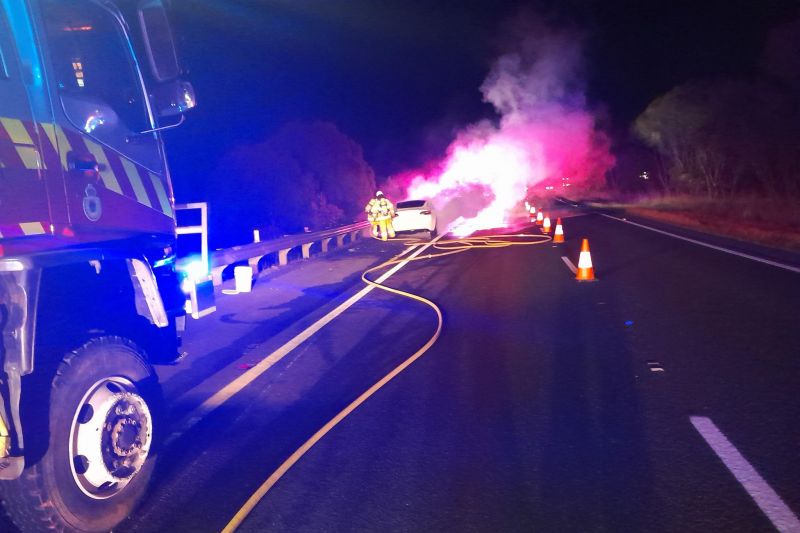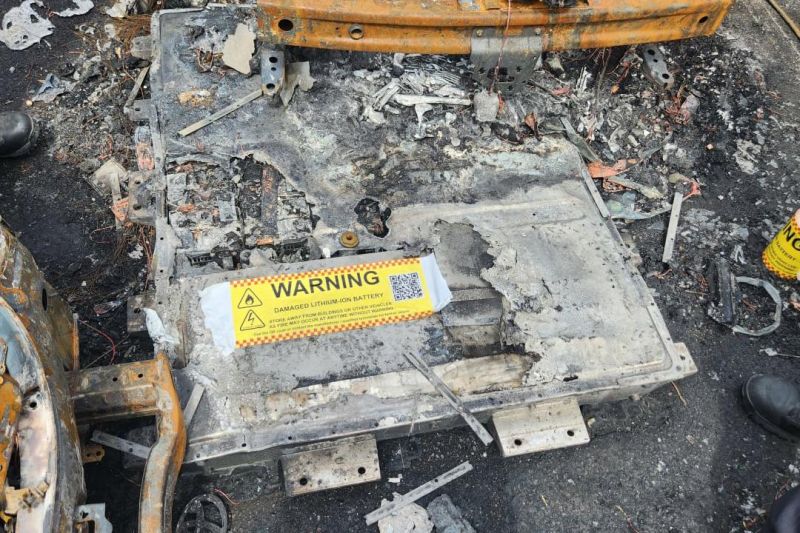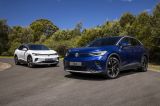A Tesla Model 3 has caught fire in Penrose, New South Wales after the driver hit debris dropped from a truck in front of it.
It’s unclear just what kind of debris was involved, but it was evidently large or sharp enough to pierce the Model 3’s battery pack and ignite a fire.
Penrose Rural Fire Brigade said the car was “well alight” when it responded to the scene, and the fire took over half an hour to put out.
The driver and passenger fortunately got out safely.
It was the Penrose Rural Fire Brigade’s first callout for an electric vehicle fire, and one firefighter said on Facebook the debris responsible for piercing the Tesla’s battery appeared to be a driveshaft.
The Model 3 involved appears to be a Dual Motor model, which means it doesn’t feature lithium iron phosphate battery chemistry like the base RWD. This increasingly common chemistry is claimed to have a much lower risk of thermal runaway and therefore pose a lower fire risk.
The issue of EV fires (thermal runaway events) has caused concern for the United Firefighters Union of Australia (UFUA), which has called for Australia’s various levels of government to “develop policy and regulate the management of risks and hazards associated with electric vehicles (EVs) and battery energy storage systems (BESS)”.
He said thermal runaway can lead to fires that are “extremely difficult to extinguish while releasing an extraordinary array of deadly toxic gases” that can be absorbed through the skin and can’t be repelled with current personal protective equipment.
Spectacular footage of EV battery fires and recalls of popular EVs due to fire risks such as this one and this one have captured public attention and led to misconceptions about how common they are – particularly relative to combustion-powered vehicles, which are inherently combustible themselves.
“EV battery fires are very rare, but present new challenges and risks for the global emergency response community, and we’re still working out how to manage these incidents,” Emma Sutcliffe, project director at EV FireSafe, told CarExpert earlier this year.
“… EVs are far less likely to catch fire than ICE [vehicles], however they’re obviously newer vehicles so we’re watching to see if that changes over time,” she cautioned.
Her company keeps a database of verifiable worldwide passenger EV battery fires and tracks emergency response methods that work.
One incident recorded by the organisation involved a tow ball falling off a truck and striking the underside of an EV, igniting a fire.
EV FireSafe says the main causes of thermal runaway and ignition or explosion in order are collisions and debris, an OEM battery fault, water submersion, workshop error, arson, an external fire, and overheating.
Commenting on the MG ZS EV that caught fire on Monday, Fire and Rescue New South Wales superintendent Adam Dewberry said EV batteries are quite different to those in smaller devices like e-scooters and e-bikes.
“We don’t see too many e-vehicle battery fires. They meet a much higher standard and regulation,” he said.












